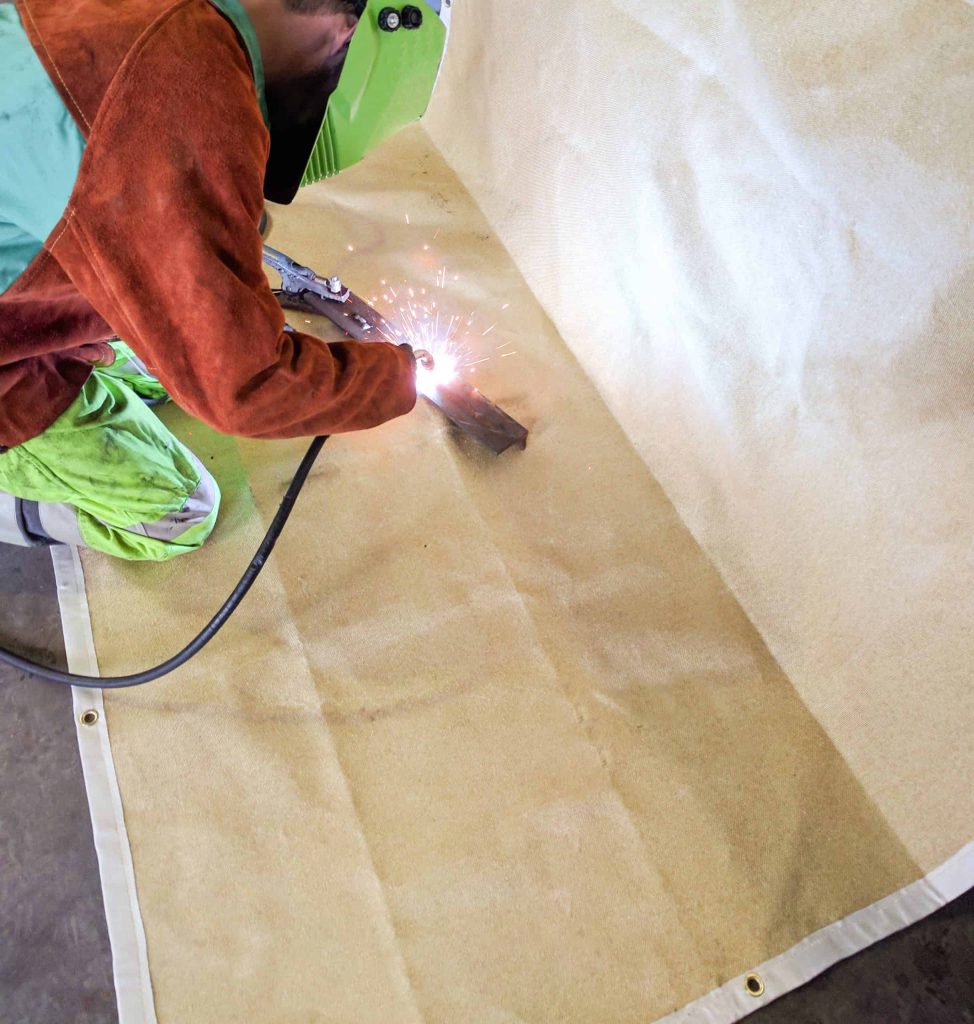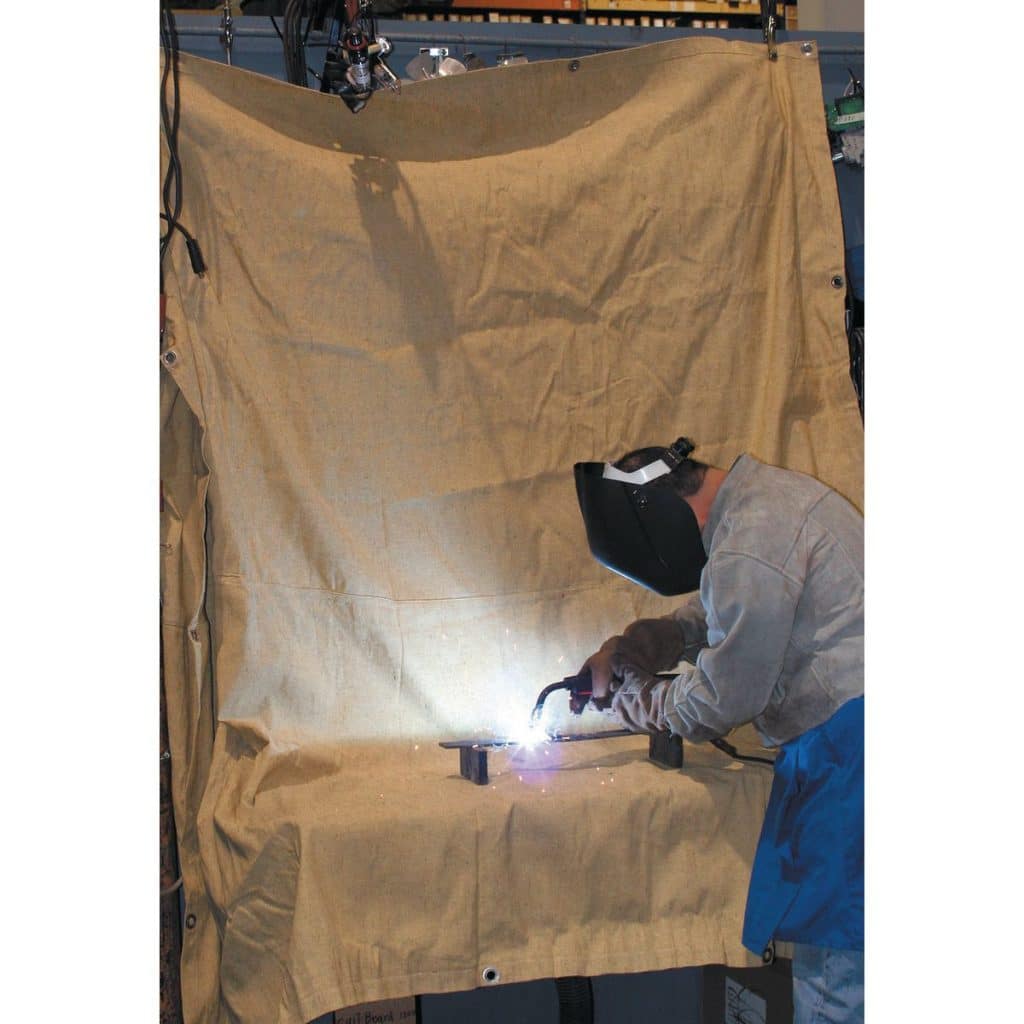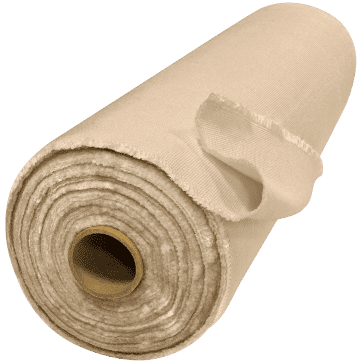In this article, we will unravel the mystery behind the purpose of a welding blanket. As we delve into the world of welding, we often come across various safety precautions and equipment used to protect welders and their surroundings. Among these, the welding blanket stands as a trusted ally, shielding against sparks, heat, and potential hazards. Join us as we explore the key functions and benefits of this essential tool, uncovering how it ensures safety and efficiency in welding operations.
This image is property of www.waylanderwelding.com.
Review contents
What is a welding blanket?
Definition
A welding blanket is a safety device designed to protect workers, equipment, and surrounding areas from the hazards associated with welding. It is a large piece of heat-resistant material that is placed over or around the welding area to contain sparks, slag, and heat, ensuring a safer and more controlled working environment.
Composition
Welding blankets are typically made from a combination of flame-resistant materials such as fiberglass, silica, or ceramic insulation. These materials are selected for their ability to withstand high temperatures, resist melting or burning, and provide effective heat insulation. The blankets are often reinforced with metal grommets or stitching for added durability and strength.
Design
Welding blankets come in various designs and sizes to suit different welding applications. They can be flat sheets, curtains, or rolls, depending on the specific requirements. Some blankets are constructed with multiple layers for enhanced protection, while others have added features such as heat-reflective coatings or specialized coatings to improve resistance to sparks and abrasion.
Fire Protection
Prevents Sparks and Slag
One of the primary purposes of a welding blanket is to prevent sparks and slag from spreading beyond the immediate welding area. These hot particles can easily ignite flammable materials, causing fires and endangering workers and nearby equipment. By covering the welding zone with a welding blanket, sparks and slag are contained and extinguished, minimizing the risk of fire and potential damage.
Reduces Fire Hazards
In addition to preventing the spread of sparks and slag, welding blankets also act as a barrier against heat transfer. This helps reduce fire hazards by isolating the welding operation from combustible materials. By creating a safer distance between the welding process and surrounding objects, the blanket minimizes the chances of accidental fires and provides a crucial line of defense in fire prevention.
Protects Surrounding Equipment
Welding blankets not only safeguard against sparks and slag but also protect surrounding equipment from heat and potential damage. The intense heat generated during welding can warp or melt nearby tools, machinery, or electronic components. By using a welding blanket, these sensitive items are shielded from excessive heat exposure, preserving their functionality and reducing the need for costly repairs or replacements.
Heat Insulation
Protects nearby objects from heat
The ability of welding blankets to insulate and retain heat is another crucial aspect of their purpose. By containing and reflecting the heat generated during welding, these blankets prevent nearby objects or materials from overheating or catching fire. This is particularly important when working in close proximity to flammable substances, sensitive equipment, or structures that could be damaged by excessive heat.
Prevents damage to surrounding materials
Welding processes can generate intense heat that can cause irreversible damage to nearby materials, such as plastics, fabrics, or painted surfaces. A welding blanket acts as a protective barrier, absorbing and dissipating heat, and preventing heat transfer to surrounding materials. This not only preserves the integrity of the materials but also ensures the quality and aesthetics of the finished product.
Increases safety for workers
By effectively insulating heat, welding blankets create a safer work environment for welders. They help to minimize the risk of burns or injuries caused by accidental contact with hot surfaces or materials. The use of welding blankets allows welders to focus on their work with confidence, knowing that they are protected from potential heat-related hazards.
Welding Safety
Prevents exposure to harmful UV rays
Welding produces intense ultraviolet (UV) radiation, which can be harmful to the human body, particularly the eyes and skin. Welding blankets are often designed with UV-resistant properties, effectively shielding both welders and others in the vicinity from prolonged exposure to these harmful rays. This helps prevent eye damage, skin burns, and long-term health complications associated with UV radiation.
Reduces risk of burns and injuries
The presence of a welding blanket significantly reduces the chances of welders and other workers in the vicinity suffering burns or injuries. By minimizing the spread of sparks, slag, and heat, these blankets create a safer working environment where accidental contact with hot particles or surfaces is less likely. This reduces the risk of burns and related injuries, enhancing overall workplace safety.
Enhances workplace safety
Overall, the use of welding blankets greatly enhances workplace safety by creating a controlled environment for welding operations. By mitigating fire hazards, protecting against heat transfer, and shielding from harmful UV rays, these blankets contribute to a safer atmosphere for welders and other workers. This not only reduces the likelihood of accidents but also promotes productivity and peace of mind among the workforce.
This image is property of www.harborfreight.com.
Controlling Heat Distribution
Maintains consistent heat levels
Welding blankets play a crucial role in controlling and maintaining consistent heat levels during welding operations. By trapping and reflecting heat generated by the welding process, these blankets help ensure a more stable and controlled working environment. This is essential for achieving the desired welding quality, as variations in heat levels can impact the integrity and strength of the welds.
Controls heat spreading
Heat spreading is a common concern during welding, especially in situations where precise heat control is required. Welding blankets act as a barrier, preventing the transfer of excess heat to surrounding areas. This containment of heat limits its spread, allowing welders to concentrate their efforts on the specific welding area without negatively affecting adjacent materials or structures.
Minimizes heat loss
In addition to heat containment, welding blankets also help minimize heat loss during welding operations. By trapping and reflecting heat back to the welding zone, the blankets ensure that a significant amount of the heat is utilized, reducing energy wastage. This results in greater efficiency and cost-effectiveness, as less energy is required to sustain the desired welding temperature.
Easy Cleanup
Catches welding splatter
Welding blankets provide an effective means of trapping and collecting welding splatter, which is a common byproduct of the welding process. The durable and flame-resistant materials used in these blankets prevent splatter from sticking or penetrating, making it easier to clean up afterward. This saves valuable time and effort that would otherwise be spent on removing stubborn splatter from expensive equipment or work areas.
Reduces cleanup time
The use of welding blankets significantly reduces cleanup time after welding operations. By confining sparks, slag, and splatter within the blanket’s boundaries, the need for extensive cleaning or debris removal is minimized. This efficiency allows for a smoother workflow, as less time and energy are devoted to the cleanup process. As a result, productivity is enhanced, and more time can be dedicated to actual welding tasks.
Improves productivity
The easy cleanup facilitated by welding blankets contributes to improved productivity in the welding environment. With less time spent on cleaning up after welding, more time can be allocated to actual welding tasks. This allows welders to complete projects more efficiently and meet deadlines without unnecessary interruptions. The increased productivity translates to better workflow and overall business success.
This image is property of www.steelguardsafety.com.
Durability
Resistant to high temperatures
Welding blankets are specifically designed to withstand extreme temperatures associated with welding operations. They are engineered from materials that possess excellent heat resistance properties, ensuring that they can withstand prolonged exposure to high temperatures without melting, burning, or deteriorating. This durability ensures the longevity of welding blankets, making them a cost-effective and reliable safety investment.
Long-lasting and reusable
Due to their durable construction and ability to withstand harsh conditions, welding blankets are long-lasting and reusable. With proper care and maintenance, these blankets can be used repeatedly, providing prolonged protection in various welding applications. Their reusability not only saves costs but also reduces waste, making them an eco-friendly choice for maintaining a safe welding environment.
Tear-resistant and strong
Welding blankets are engineered to be tear-resistant and strong to withstand the rigors of welding operations. The materials used in their construction are carefully selected for their exceptional strength and resistance to tearing or puncturing. This ensures that the blankets remain intact and fully functional, even in demanding welding environments where sparks, molten metal, and sharp objects may pose a risk to their integrity.
Versatility
Suitable for various welding processes
Welding blankets are highly versatile and suitable for use in various welding processes. Whether it is MIG welding, TIG welding, arc welding, or any other welding technique, these blankets can effectively protect workers and equipment from sparks, heat, and splatter. Their compatibility with multiple welding methods makes them a versatile safety device that adapts to the specific needs of different welding applications.
Compatible with different materials
Welding blankets are designed to be compatible with a wide range of materials commonly used in welding operations. Whether it is steel, aluminum, copper, or any other metals, these blankets can protect against sparks, slag, and heat generated during welding. Additionally, they can also be used with non-metallic materials, such as thermoplastics or composite materials, making them a versatile solution for various welding projects.
Adaptable in different settings
Welding blankets are versatile not only in terms of welding processes and materials but also in their adaptability to different settings. They can be used in industrial manufacturing facilities, construction sites, automotive repair shops, or even in personal workshops. The portability and ease of installation of these blankets allow for their seamless integration into diverse work environments, ensuring safety wherever welding is being carried out.
This image is property of www.steelguardsafety.com.
Blanket Selection
Choosing the right size
Selecting the right size of welding blanket is essential to ensure proper coverage and optimum protection. A blanket that is too small may leave areas susceptible to heat exposure and sparks, while an oversized blanket could be cumbersome and less effective. Carefully reviewing the dimensions of the welding area and considering potential hazards can help determine the appropriate size of the blanket needed for each welding project.
Considering temperature resistance
Temperature resistance is a crucial factor to consider when selecting a welding blanket. Different welding processes and materials generate varying levels of heat, and the blanket chosen must be able to withstand these temperatures without compromising its integrity. Reviewing the temperature ratings of different blankets and matching them to the specific requirements of the welding application is essential to ensure maximum protection and safety.
Selecting the appropriate material
The choice of material for a welding blanket depends on the specific hazards and requirements of the welding operation. Fiberglass blankets offer excellent heat resistance and durability, while silica blankets provide enhanced resistance to slag and molten metal. Ceramic insulation blankets are suitable for extreme temperatures and offer superior insulation properties. Considering the specific hazards and demands of the welding task will guide the selection of the most appropriate material for the welding blanket.
Maintenance and Storage
Proper cleaning and maintenance practices
Proper cleaning and maintenance of welding blankets are crucial to ensure their longevity and effectiveness. Regularly removing any accumulated welding debris, splatter, or slag from the blanket’s surface is important to prevent potential ignition sources. Brushing or shaking off loose particles and using a soft brush or vacuum to clean the blanket can help maintain its performance. Following the manufacturer’s guidelines for cleaning and maintenance is paramount to ensure safe and reliable use.
Storing the blanket correctly
Storing welding blankets correctly is essential to preserve their functionality and extend their lifespan. Ideally, blankets should be stored in clean and dry environments, away from direct sunlight or excessive moisture. Rolling up the blankets and storing them in a secure location, such as a dedicated storage bag or container, can help prevent damage and contamination. Avoiding folding or creasing the blankets excessively minimizes the risk of weakening or compromising their protective capabilities.
Inspecting for damage
Regularly inspecting welding blankets for signs of damage is a crucial part of their maintenance routine. Tears, holes, or frayed edges can significantly reduce the effectiveness of the blanket in providing protection and insulation. Thoroughly examining the blanket before each use and promptly repairing or replacing any damaged areas ensures that the blanket remains in optimal condition and continues to deliver the necessary safety benefits.
In conclusion, a welding blanket serves a crucial purpose in the world of welding by offering multifaceted protection. From preventing sparks and slag to providing heat insulation, enhancing welding safety, controlling heat distribution, facilitating easy cleanup, and promoting durability and versatility, welding blankets are essential safety devices. By selecting the right size, considering temperature resistance, storing and maintaining them correctly, welders can rely on welding blankets to create a safer and more efficient working environment. Whether it is in industrial settings or personal workshops, the use of welding blankets ensures that the hazards associated with welding are effectively mitigated, protecting both workers and valuable equipment.
This image is property of www.waylanderwelding.com.
































